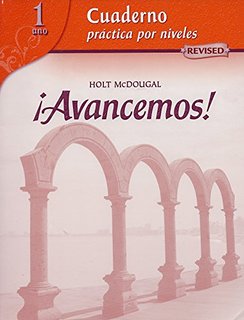
All Solutions
Page 44: Culutura A
Reading with comprehension.
Turn your manual to pages 28-29 and 72-73. You have already read these texts several times, however give them another go to refresh your memory. They contain information you need to answer these questions. Each question will be analysed separately in the following paragraphs.
A quick glimpse at the data at the bottom of page 28 will reveal that this is El Paso, Texas.
On page 29, there are three texts. The middle one, “La comunidad cubana de Miami” clearly states that Little Havana is home to Calle Ocho. This information is repeated on page 73.
Take a look at the text on page 72. You will see several items listed as San Antonio’s attractions. Besides the fact that only the Paseo del Río appears in the workbook, it is also featured on page 55. Thus, one of San Antonio’s main attractions would be the Paseo del Río.
2. A
3. B
Reading with comprehension.
For this exercise, you will turn to pages 68 and 72-73 in your manual. Read the texts carefully and complete the sentences about Texas and Florida. Below, you will find an analysis of each sentence.
Carmen Lomas Garza is an artist mentioned on page 68. You will notice that it does not say where she grew up, however it is a text about Texas and a quick research on-line will show that she was born in Texas. Thus, the adecuate solution in the first sentence would be Texas.
2. Cascarones
3. Calle Ocho
4. mariachi music
Reading with comprehension.
In your manual, open to page 60. Read thoroughly through the text to understand it. Then, head over to your workbook and fill in the table.
Afterwards, describe the dishes and tell if you like them or not. Below, you will find an analysis for each section of this exercise. Bear in mind that this is a personal question, thus your response may vary. Use the below examples as a reference of how your sentences should look like.
Read the text once again. Around the end, you will notice that it specifically says that certain ingredients belong to continental Mexico. Pick two of these and then refer to the previous sentence, where Tex-Mex dishes are listed. Again, select two and put them in the table.
Example:
Tex-Mex: nachos, fajitas;
Mexico: tortilla de maíz, frijoles.
Example 1: Los nachos son un plato de origen mexicano. Consisten en trozos de tortilla de maíz y queso. Tienen un sabor muy rico y me gustan mucho.
Example 2: La fajitas son un plato típico de Tex-Mex. Se envuelven trozos de carne asada en una tortilla. Me gusta el plato porque es muy rico.
Example 3: La tortilla de maíz es un alimento de maíz que se utiliza en la cocina mexicana. No me gusta el sabor de la tortilla, pero me gusta cuando acompaña otros platos.
Example 4: Los frijoles son una planta muy conocida. Se come en todo el mundo y lleva varios nombres dependiendo de la región. Los frijoles sí me gustan.
In Spain, a “tortilla” is a cake-like dish made of potatos. Usually, you would add onions, too. It is sliced just like a cake and has nothing to do with Mexican tortillas.
Regarding beans, “frijoles” is mainly used in Mexico, whereas “judías” is more frequent in Spain. Other terms referring to the same ingredient are “alubias”, “habichuelas”, “porotos” etc.

